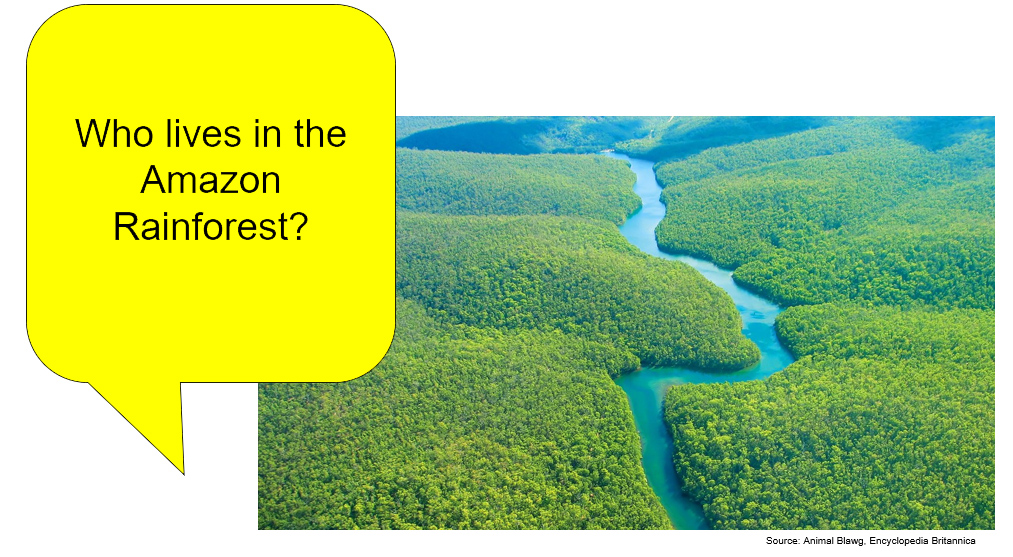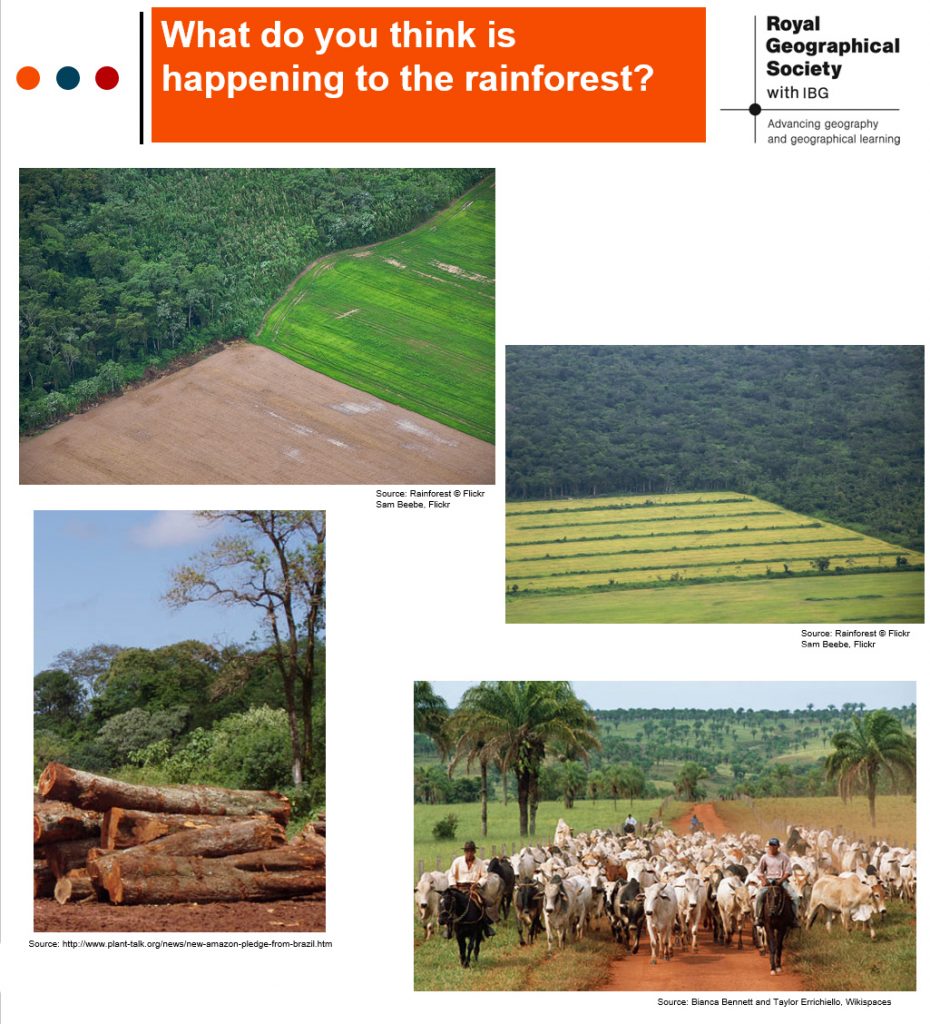In one of our previous sessions we found out about the push/pull factors which would encourage people to move to the urbanised areas.
So to start, a question:
Do you think everyone living in Brazil wants to migrate or live in the urbanised areas of Brazil?
If not, why not?

Watch this clip, which shows footage of the Awa tribe:
The Awa tribe are an uncontacted tribe (which means that the tribe has no contact with the outside, modern world).
- What do you think the lives of these people is like?
- How do you think they felt when they saw the plane filming them?
Brazil is how to the highest number of uncontacted tribes in the world – there are thought to be over 77 isolated groups living within the Amazon.
Another term used is indigenous people. This refers to people who originate from a particular region or country who choose to remain living in their ancestral home.
Main Activity
You are going to research and find out more information about the indigenous people of the Amazon. You will be focusing on developing your knowledge and understanding of the Awa tribe.
There is information below and you can read more about the tribe by visiting the BBC website: www.bbc.co.uk/news/magazine-27500689. You may also like to carry out further research.
Create a short fact file about the lives of the tribe.
Plenary
So what factors are happening which may affect the lifestyle of the Awa tribe?

What do you think are the consequences of: cattle ranching, farming, logging, disease and road building on the lives of the Awa tribe (and also the lives of those undertaking these activities)?
Cattle ranching, logging, mining, farming and road construction are the biggest causes of deforestation in the Amazon region. People need oxygen to survive and the Amazon’s trees and plants are responsible for providing more than 20% of the world’s oxygen. The Amazon rainforest was given the nickname,’ Lungs of the Planet’.
People from around the world rely on the Amazon rainforest for a huge portion of their daily diets. Fruits, nuts, rice, corn, coffee, potatoes, vegetables, spices, and many other important foods are grown there.
In the 1970s the Brazilian government decided to integrate the rainforest with civilization and began building several road ways to make the Amazon rainforest more accessible. This meant that farmers, loggers and miners began having access to and using the land more for their activities, resulting in further deforestation. Now the government has put policies and penalties into place to prevent further deforestation by individuals and companies. Deforestation has led to a decline in indigenous tribes, contacted and uncontacted such as the Awa.
So, what can be done to help to further protect the tribes of the Amazon Rainforest?